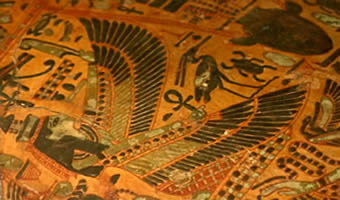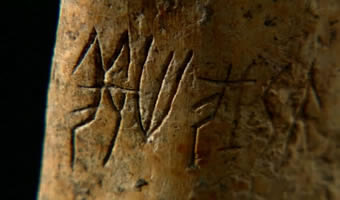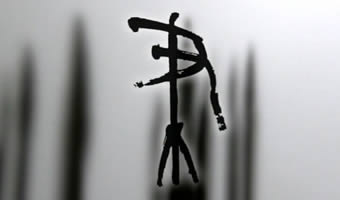Ancient civilization and charactersCosmic world of Fude

Inscriptions on bones and tortoise carapace
Development of Kanji and Fude "Chousahitsu"
An ancient civilization was born approximately 5000 years ago. In ancient Mesopotamia, Code of Hammurabi was curved on a massive stone slab, using a various symbols systematically combined. Its characters were inscribed on a clay tablet by reed pens, and since these characters have cuneal wedge-shape, they are called cuneiform characters. Hieroglyph of ancient Egypt is the pictograph; pictures representing images. And the origin of Kanji scripts that we now use daily is found in Chinese inscriptions, which were written on bones and tortoise carapace.
Carved lines seen in these inscriptions suggest that Fude were already being used back then. One theory has it that people might have used animal hair and dipped them into soot mixed with water. There is a Fude called “Chousahitsu” used in China during the time of civil was, and rabbit hair was used for its Fude head and bamboo was used for the handle.
Later, in 221 BC, Shi Huangdi of Qin dynasty in China standardized written characters as well as weights and measures. As the characters came into maturity, "Bunpou shihou"(Four treasures of study) developed significantly. Then, Kaisho scripts were created.
At the same time, many calligraphers appeared in the scene including the master calligrapher Ou Gishi (Wang Xizhi) and they built a foundation for the culture of characters, which has been passed down to the present. The encounter of Fude and water marked the beginning of Fude culture, and it expanded its influence further into the world of arts and crafts in the process of development.
 Ancient Egypt Pictograph
Ancient Egypt Pictograph Ancient Mesopotamia, Cuneiform characters
Ancient Mesopotamia, Cuneiform characters Chinese inscriptions, which were written on bones and tortoise carapace.
Chinese inscriptions, which were written on bones and tortoise carapace.  Chinese inscriptions, “Fude”
Chinese inscriptions, “Fude”